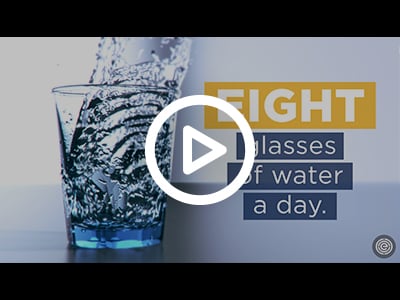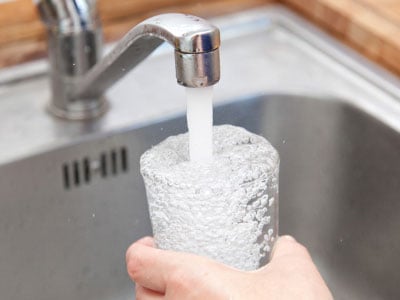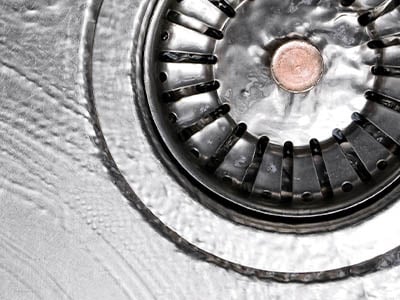Hahira
EWG's drinking water quality report shows results of tests conducted by the water utility and provided to the Environmental Working Group by the Georgia Department of Natural Resources, as well as information from the U.S. EPA Enforcement and Compliance History database (ECHO). For the latest quarter assessed by the U.S. EPA (January 2021 - March 2021), tap water provided by this water utility was in serious violation federal health-based drinking water standards.
Utility Details
- Hahira, Georgia
- Serves: 3,562
- Data available: 2014-2019
- Source: Groundwater
Contaminants Detected
7
EXCEED
EWG HEALTH
GUIDELINES
14 Total Contaminants
- Legal does not necessarily equal safe. Getting a passing grade from the federal government does not mean the water meets the latest health guidelines.
- Legal limits for contaminants in tap water have not been updated in almost 20 years.
- The best way to ensure clean tap water is to keep pollution out of source water in the first place.
Looking for a countertop water filter?
Find out which filters earned EWG's recommendation
See the guideContaminants Detected
Bromodichloromethane
Potential Effect: cancer72x EWG'S HEALTH GUIDELINEBromodichloromethane
more aboutthis contaminant
Bromodichloromethane, one of the total trihalomethanes (TTHMs), is formed when chlorine or other disinfectants are used to treat drinking water. Bromodichloromethane and other disinfection byproducts increase the risk of cancer and may cause problems during pregnancy. Click here to read more about disinfection byproducts.
Bromodichloromethane was found at 72 times above EWG's Health Guideline.
EWG Health Guideline
This Utility
National Average
State Average
ppb = parts per billion
Health Risks
The EWG Health Guideline of 0.06 ppb for bromodichloromethane was proposed in 2018 by the California Office of Environmental Health Hazard Assessment as a one-in-a-million lifetime risk of cancer. Values greater than one-in-a-million cancer risk level can result in increased cancer cases above one in a million people.
Pollution Sources
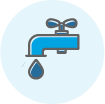
Treatment Byproducts
Filtering Options
Activated Carbon
Reverse Osmosis
Chloroform
Potential Effect: cancer104x EWG'S HEALTH GUIDELINEChloroform
more aboutthis contaminant
Chloroform, one of the total trihalomethanes (TTHMs), is formed when chlorine or other disinfectants are used to treat drinking water. Chloroform and other disinfection byproducts increase the risk of cancer and may cause problems during pregnancy.
Chloroform was found at 104 times above EWG's Health Guideline.
EWG Health Guideline
This Utility
National Average
State Average
ppb = parts per billion
Health Risks
The EWG Health Guideline of 0.4 ppb for chloroform was proposed in 2018 by the California Office of Environmental Health Hazard Assessment as a one-in-a-million lifetime risk of cancer. Values greater than one-in-a-million cancer risk level can result in increased cancer cases above one in a million people.
Pollution Sources

Treatment Byproducts
Filtering Options
Activated Carbon
Reverse Osmosis
Dichloroacetic acid
Potential Effect: cancer85x EWG'S HEALTH GUIDELINEDichloroacetic acid
more aboutthis contaminant
Dichloroacetic acid, one of the group of five haloacetic acids regulated by federal standards, is formed when chlorine or other disinfectants are used to treat drinking water. Haloacetic acids and other disinfection byproducts increase the risk of cancer and may cause problems during pregnancy. Click here to read more about disinfection byproducts.
Dichloroacetic acid was found at 85 times above EWG's Health Guideline.
EWG Health Guideline
This Utility
National Average
State Average
ppb = parts per billion
Health Risks
The EWG Health Guideline of 0.2 ppb for dichloroacetic acid was proposed in 2020 by the California Office of Environmental Health Hazard Assessment as a public health goal, the level of a drinking water contaminant that does not pose a significant health risk.a one-in-a-million lifetime risk of cancer. Values greater than one-in-a-million cancer risk level can result in increased cancer cases above one in a million people.
Pollution Sources

Treatment Byproducts
Filtering Options
Activated Carbon
Reverse Osmosis
Haloacetic acids (HAA5)†
Potential Effect: cancer479x EWG'S HEALTH GUIDELINEHaloacetic acids (HAA5)
more aboutthis contaminant
Haloacetic acids are formed when disinfectants such as chlorine are added to tap water. The group of five haloacetic acids regulated by federal standards includes monochloroacetic acid, dichloroacetic acid, trichloroacetic acid, monobromoacetic acid and dibromoacetic acid.
Haloacetic acids (HAA5) was found at 479 times above EWG's Health Guideline.
EWG Health Guideline
This Utility
Legal Limit
National Average
State Average
ppb = parts per billion
Health Risks
The EWG Health Guideline of 0.1 ppb for the group of five haloacetic acids, or HAA5, was defined in a peer-reviewed scientific study by EWG and represents a one-in-a-million lifetime cancer risk level. This health guideline protects against cancer.
Pollution Sources

Treatment Byproducts
Filtering Options
Activated Carbon
Reverse Osmosis
Radium, combined (-226 & -228)
Potential Effect: cancer14x EWG'S HEALTH GUIDELINERadium, combined (-226 & -228)
more aboutthis contaminant
Radium is a radioactive element that causes bone cancer and other cancers. It can occur naturally in groundwater, and oil and gas extraction activities such as hydraulic fracturing can elevate concentrations.
Radium, combined (-226 & -228) was found at 14 times above EWG's Health Guideline.
EWG Health Guideline
This Utility
Legal Limit
National Average
State Average
pCi/L = picocuries per liter
Health Risks
EWG applied the health guideline of 0.05 pCi/L, defined by the California Office of Environmental Health Hazard Assessment as a public health goal for radium-226, to radium-226 and radium-228 combined. This health guideline protects against cancer.Pollution Sources

Industry

Naturally Occurring
Filtering Options
Reverse Osmosis
Ion Exchange
Total trihalomethanes (TTHMs)†
Potential Effect: cancer284x EWG'S HEALTH GUIDELINETotal trihalomethanes (TTHMs)
more aboutthis contaminant
Trihalomethanes are cancer-causing contaminants that form during water treatment with chlorine and other disinfectants. The total trihalomethanes group includes four chemicals: chloroform, bromodichloromethane, dibromochloromethane and bromoform.
Total trihalomethanes (TTHMs) was found at 284 times above EWG's Health Guideline.
EWG Health Guideline
This Utility
Legal Limit
National Average
State Average
ppb = parts per billion
Health Risks
The health guideline of 0.15 parts per billion, or ppb, for the group of four trihalomethanes, or THM4/TTHM, was defined in a peer-reviewed scientific study by EWG and represents a one-in-one-million lifetime cancer risk level.Pollution Sources

Treatment Byproducts
Filtering Options
Activated Carbon
Reverse Osmosis
Trichloroacetic acid
Potential Effect: cancer307x EWG'S HEALTH GUIDELINETrichloroacetic acid
more aboutthis contaminant
Trichloroacetic acid, one of the group of five haloacetic acids regulated by federal standards, is formed when chlorine or other disinfectants are used to treat drinking water. Haloacetic acids and other disinfection byproducts increase the risk of cancer and may cause problems during pregnancy. Click here to read more about disinfection byproducts.
Trichloroacetic acid was found at 307 times above EWG's Health Guideline.
EWG Health Guideline
This Utility
National Average
State Average
ppb = parts per billion
Health Risks
The EWG Health Guideline of 0.1 ppb for trichloroacetic acid was proposed in 2020 by the California Office of Environmental Health Hazard Assessment as a public health goal, the level of a drinking water contaminant that does not pose a significant health risk.a one-in-a-million lifetime risk of cancer. Values greater than one-in-a-million cancer risk level can result in increased cancer cases above one in a million people.
Pollution Sources

Treatment Byproducts
Filtering Options
Activated Carbon
Reverse Osmosis
Includes chemicals detected in 2017-2019 for which annual utility averages exceeded an EWG-selected health guideline established by a federal or state public health authority; radiological contaminants detected between 2014 and 2019.
† HAA5 is a contaminant group that includes monochloroacetic acid, dichloroacetic acid, trichloroacetic acid, monobromoacetic acid and dibromoacetic acid. HAA9 is a contaminant group that includes the chemicals in HAA5 and bromochloroacetic acid, bromodichloroacetic acid, chlorodibromoacetic acid and tribromoacetic acid. TTHM is a contaminant group that includes bromodichloromethane, bromoform, chloroform and dibromochloromethane.
Chloromethane
more aboutthis contaminant
Chloromethane is an industrial solvent, aerosol propellant and a refrigerant. It also forms as a byproduct of water disinfection. The EPA classifies chloromethane as possibly carcinogenic to humans.
How your levels compare
EWG Health Guideline
This Utility
National Average
State Average
ppb = parts per billion
Health Risks
The EWG Health Guideline of 2.69 ppb for chloromethane was defined by the Environmental Protection Agency as a benchmark for testing under the Unregulated Contaminant Monitoring Rule program. This health guideline protects against cancer.
Pollution Sources

Industry

Treatment Byproducts

Naturally Occurring
Filtering Options
Activated Carbon
Reverse Osmosis
Dibromochloromethane
more aboutthis contaminant
Dibromochloromethane, one of the total trihalomethanes (TTHMs), is formed when chlorine or other disinfectants are used to treat drinking water. Dibromochloromethane and other disinfection byproducts increase the risk of cancer and may cause problems during pregnancy. Click here to read more about disinfection byproducts.
How your levels compare
EWG Health Guideline
This Utility
National Average
State Average
ppb = parts per billion
Health Risks
The EWG Health Guideline of 0.1 ppb for dibromochloromethane was proposed in 2018 by the California Office of Environmental Health Hazard Assessment as a one-in-a-million lifetime risk of cancer. Values greater than one-in-a-million cancer risk level can result in increased cancer cases above one in a million people.
Pollution Sources

Treatment Byproducts
Filtering Options
Activated Carbon
Reverse Osmosis
Ethylbenzene
more aboutthis contaminant
Ethylbenzene, a component of petroleum, is a volatile cancer-causing chemical primarily used for production of plastics and rubber. Ethylbenzene is also released from gasoline fuel emissions.
How your levels compare
EWG Health Guideline
This Utility
Legal Limit
National Average
State Average
ppb = parts per billion
Health Risks
The EWG Health Guideline of 300 ppb for ethylbenzene was defined by the California Office of Environmental Health Hazard Assessment as a public health goal, the level of a drinking water contaminant that does not pose a significant health risk. This health guideline protects against harm to internal organs.
Pollution Sources

Agriculture

Industry
Filtering Options
Activated Carbon
Reverse Osmosis
Fluoride
more aboutthis contaminant
Fluoride occurs naturally in surface and groundwater and is also added to drinking water by many water systems.
How your levels compare
This Utility
Legal Limit
National Average
State Average
ppm = parts per million
Pollution Sources

Treatment Byproducts
Filtering Options
Reverse Osmosis
Manganese
more aboutthis contaminant
Manganese is a naturally occurring element that is common in food and drinking water. Excessive manganese exposures may impair children's attention, memory and intellectual capacity. Click here to read more about manganese.
How your levels compare
EWG Health Guideline
This Utility
National Average
State Average
ppb = parts per billion
Health Risks
The EWG Health Guideline of 100 ppb for manganese was defined by the state of Minnesota as a health risk limit, the concentration of a contaminant that can be consumed with little or no risk to health. This health guideline protects against harm to the brain and nervous system.
Pollution Sources

Industry

Naturally Occurring
Filtering Options
Ion Exchange
Monochloroacetic acid
more aboutthis contaminant
Monochloroacetic acid, one of the group of five haloacetic acids regulated by federal standards, is formed when chlorine or other disinfectants are used to treat drinking water. Haloacetic acids and other disinfection byproducts increase the risk of cancer and may cause problems during pregnancy. Click here to read more about disinfection byproducts.
How your levels compare
EWG Health Guideline
This Utility
National Average
State Average
ppb = parts per billion
Health Risks
The EWG Health Guideline of 53 ppb for monochloroacetic acid was proposed in 2020 by the California Office of Environmental Health Hazard Assessment as a public health goal, the level of a drinking water contaminant that does not pose a significant health risk.. This health guideline protects against system toxicity.
Pollution Sources

Treatment Byproducts
Filtering Options
Activated Carbon
Reverse Osmosis
Xylenes (total)
more aboutthis contaminant
Xylenes are solvents used in industrial and consumer products, such as cleaning agents and paint thinners. Xylenes cause nervous system damage and may harm developing fetuses.
How your levels compare
EWG Health Guideline
This Utility
Legal Limit
National Average
State Average
ppb = parts per billion
Health Risks
The EWG Health Guideline of 1,800 ppb for xylenes was defined by the California Office of Environmental Health Hazard Assessment as a public health goal, the level of a drinking water contaminant that does not pose a significant health risk. This health guideline protects against harm to the brain and nervous system.
Pollution Sources

Industry

Runoff & Sprawl
Filtering Options
Activated Carbon
Reverse Osmosis
Includes chemicals detected in 2017-2019 for which annual utility averages were lower than an EWG-selected health guideline established by a federal or state public health authority; chemicals detected under the EPA's Unregulated Contaminant Monitoring Rule (UCMR 3) program in 2013 to 2015 (and subsequent testing when available), for which annual utility averages were lower than an EWG-selected health guideline established by a federal or state public health authority.
Other Contaminants Tested
✕Hahira compliance with legally mandated federal standards:
- From April 2019 to March 2021, Hahira did not comply with health-based drinking water standards.
- 12 QUARTERSin violation of any federal drinking water standard from April 2019 to March 2021
- Over the last 3 years this water utility has spent 10 QUARTERSin significant violation of federal drinking water standards
Information in this section on Hahira comes from the U.S. EPA Enforcement and Compliance History Online database (ECHO).
LEARN MORE ABOUT THIS UTILITYWater Filters That Can Reduce Contaminant Levels
| Contaminant | Activated Carbon | Reverse Osmosis | Ion Exchange |
| CONTAMINANTS ABOVE HEALTH GUIDELINES | |||
| Bromodichloromethane | ✔ | ✔ | |
| Chloroform | ✔ | ✔ | |
| Dichloroacetic acid | ✔ | ✔ | |
| Haloacetic acids (HAA5) | ✔ | ✔ | |
| Radium, combined (-226 & -228) | ✔ | ✔ | |
| Total trihalomethanes (TTHMs) | ✔ | ✔ | |
| Trichloroacetic acid | ✔ | ✔ | |
| OTHER CONTAMINANTS DETECTED | |||
| Chloromethane | ✔ | ✔ | |
| Dibromochloromethane | ✔ | ✔ | |
| Ethylbenzene | ✔ | ✔ | |
| Fluoride | ✔ | ||
| Manganese | ✔ | ||
| Monochloroacetic acid | ✔ | ✔ | |
| Xylenes (total) | ✔ | ✔ | |
Take Action
Contact Your Local Official
One of the best ways to push for cleaner water is to hold accountable the elected officials who have a say in water quality – from city hall and the state legislature to Congress all the way to the Oval Office – by asking questions and demanding answers.
LEARN MOREFilter Out Contaminants
Check out our recommendations for filters to protect your water against the detected contaminants.
EWG’S WATER FILTER GUIDE